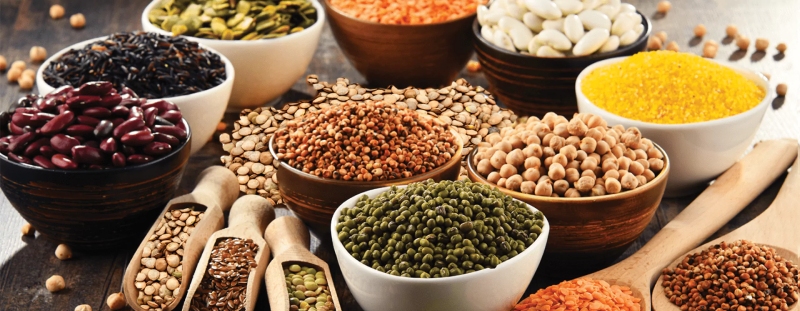Exporting Pulses: Comprehensive Guide on Production, Features, and Market Dynamics
Pulses are one of the most important sources of plant-based protein, playing a crucial role in human and animal nutrition. These agricultural products, with their high diversity, are consumed worldwide and hold significant economic and nutritional value. This article examines the production process, types and features of pulses, export opportunities and challenges, and the domestic and international market landscape.
Production Process of Pulses
The production of pulses involves several critical stages that ensure high-quality yields:
Soil Preparation: Pulses thrive in well-drained soils with good fertility. Soil preparation involves plowing, tilling, and sometimes adding organic matter to enhance soil health.
Sowing: Depending on the type of pulse, seeds are sown either directly into the field or started in nurseries. Sowing methods can include broadcasting, drilling, or using precision seeders.
Irrigation and Crop Management: Pulses generally require moderate water. Efficient irrigation methods and careful water management are crucial, especially in areas with low rainfall. Crop management practices such as weeding, pest control, and disease management help ensure healthy growth.
Harvesting: Pulses are typically harvested when they reach full maturity. This can be done manually or with the help of mechanical harvesters, ensuring minimal damage to the seeds.
Processing: Post-harvest processing includes cleaning, drying, and sometimes dehulling (removing the outer layer) to prepare the pulses for storage or further processing.
Storage: Proper storage conditions, such as cool and dry environments, are essential to prevent spoilage and maintain the quality of pulses.
Types and Features of Pulses
Here are some of the products with their features:
Chickpeas
– Rich in protein and fiber.
– Used in various dishes like hummus and stews.
Beans
– Various types including red, white, pinto, and green beans.
– Excellent sources of protein and iron.
Lentils
– Different types such as green, brown, and red lentils.
– Quick to cook and ideal for soups and stews.
Mung Beans
– Known for their antioxidant properties.
– Used in salads and various dishes.
Broad Beans
– Rich in vitamins and minerals.
– Used in traditional and modern cuisines.
Export Opportunities and Challenges
Export Opportunities:
– Global Demand: Pulses are in high demand as a source of plant-based protein in various countries.
– Organic Products: The increasing preference for organic products can create new export opportunities.
– Climate Diversity: The ability to cultivate pulses in various climates allows for diverse production.
Export Challenges:
– Intense Competition: Major producers like India, Canada, and China dominate the global markets.
– Transportation Issues: Transporting pulses to distant markets is costly and requires adequate infrastructure.
– Price Volatility: The highly volatile prices of pulses in global markets can impact exporters’ revenues.
Domestic Pulses Market
Opportunities:
– High Demand: Pulses are a staple in households and the food industry, making them essential in the food basket.
– Domestic Production Capacity: Improving agricultural infrastructure can enhance domestic production to meet market demand.
Challenges:
– Import Dependency: Some countries heavily rely on pulse imports to meet domestic needs.
– Domestic Price Volatility: Global price fluctuations can affect domestic prices, leading to market instability.
Pulses, as vital agricultural products, have extensive domestic and international markets. Considering the relatively simple production process and the high diversity of these products, investing in the development and processing of pulses can create numerous opportunities in global markets. However, challenges such as intense competition and price volatility must also be addressed. With proper planning and the use of advanced technologies, the position of pulse exports in global markets can be significantly strengthened. Pulses are a cornerstone of global food security and nutrition, offering immense opportunities for exporters and producers. Understanding the production processes, types, and characteristics of pulses, alongside navigating the complexities of export markets, is crucial for success in the pulse industry. By leveraging opportunities and addressing challenges, the pulse sector can thrive, contributing to sustainable agriculture and healthier diets worldwide.

